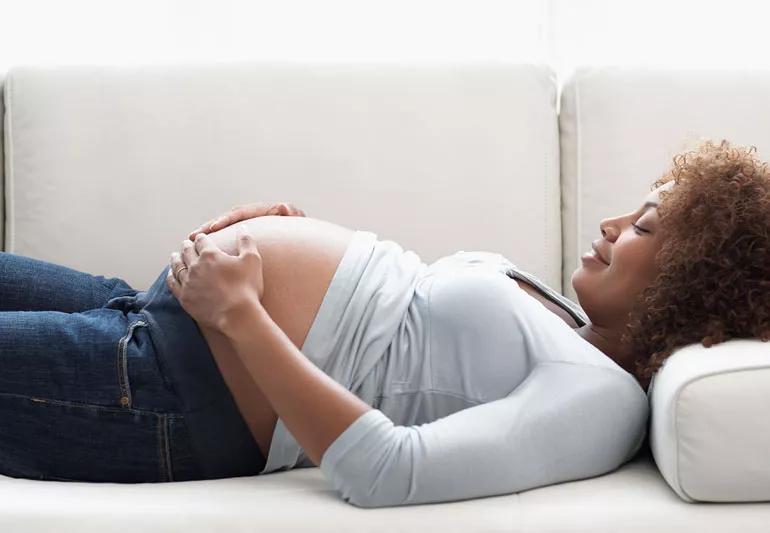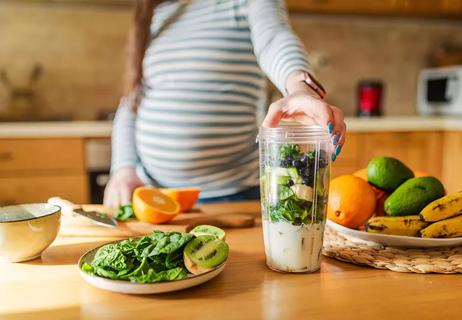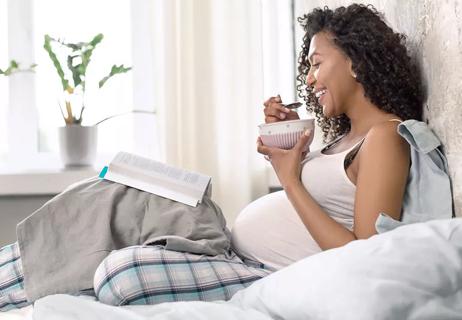Adults are often asymptomatic, but this bacteria can seriously harm newborns

When you hear “strep,” you probably think of strep throat, that painful throat and tonsil infection that nearly every child and many unlucky adults have suffered through at some point or another. Strep throat is the most common of a number of Group A streptococcal (GAS) infections.
Advertisement
Cleveland Clinic is a non-profit academic medical center. Advertising on our site helps support our mission. We do not endorse non-Cleveland Clinic products or services. Policy
But there’s another type of strep, too — Group B Streptococcus (GBS), sometimes called vaginal strep, which can be deadly to newborn babies.
Ob/Gyn Edward Chien, MD, MBA, explains what you should know about Group B strep, including how it’s detected and treated.
Group B strep is a germ that lives in an estimated 10% to 30% of pregnant women — though that in itself is not too alarming. “As humans, we have all sorts of bacteria living inside us,” Dr. Chien explains. “About a third of women are colonized with group B strep. It commonly lives in the colon and can then colonize the vagina.”
Group B strep is usually pretty unproblematic in healthy adults — but if it’s passed to your newborn baby during vaginal birth, it can cause them very serious health problems, including:
“Babies’ immune systems haven’t been exposed to lots of bacteria, so their bodies aren’t as good at fighting it off or living with it,” Dr. Chien explains. “If a baby passes through the birth canal, where Group B strep is present, that baby may be susceptible to infection.”
He continues, “Most full-term babies have a strong enough immune system to fight it off or prevent it from causing a problem, but a small percentage won’t have a strong enough immune system. In that case, it can become severe in a very short period of time.”
Advertisement
In healthy adults, Group B strep is a bit of a lurker — that is to say, it doesn’t often cause symptoms or complications in people who have it. If you have GBS but don’t exhibit any symptoms, you’re called a carrier.
“Typically, people just live with it, and it doesn’t cause a problem,” Dr. Chien says.
Most babies who have GBS will start showing signs of it within 24 hours after birth, before they’ve even left the hospital. Those signs include:
Babies who test positive for Group B strep may need to be treated in the newborn intensive care unit (NICU), where they’ll receive antibiotics. “If your newborn starts to experience any of these symptoms after you’ve left the hospital, call your pediatrician right away,” Dr. Chien advises.
Good news: Your pregnancy care team will screen you for Group B strep near the end of your pregnancy — around 36 to 37 weeks. If you test positive, you’ll be given IV antibiotics (typically penicillin, unless you’re allergic) when you go into labor. This quickly reduces the amount of transmissible GBS in your body to the point that you’re unlikely to pass it on to your newborn.
“Group B strep is an organism that’s very sensitive to penicillin, so when we give penicillin to a pregnant patient, it reduces the bacteria within one to two hours,” Dr. Chien says. “That way, even if a baby passes through the birth canal, it’s not likely to get sick.”
If you go into labor before you’ve been tested for group B strep, doctors will typically give you penicillin if you are still preterm regardless, just to be on the safe side. “Preterm babies are more susceptible to Group B strep, so unless they recently tested negative for it, patients who go into early labor are automatically treated for it when they come in.”
Advertisement
Learn more about our editorial process.
Advertisement

Vaginal bleeding, cramping and a decrease in pregnancy symptoms can be signs — but can have other causes, too

Lifestyle changes can help, but you may also need medication

Watch your diet, exercise regularly and get a blood glucose level screening early

Find out how clean eating can help you thrive during your pregnancy

Breaking through emotional pain, stigma

Clean your baby’s mouth with a washcloth or small toothbrush if they have a tooth or you suspect thrush

Avoid high-mercury fish and processed meat, and go easy on salt and caffeine

Ob/Gyns and midwives both care for your gynecological and pregnancy needs — which you choose depends on your health and comfort

If you’re feeling short of breath, sleep can be tough — propping yourself up or sleeping on your side may help

If you fear the unknown or find yourself needing reassurance often, you may identify with this attachment style

If you’re looking to boost your gut health, it’s better to get fiber from whole foods